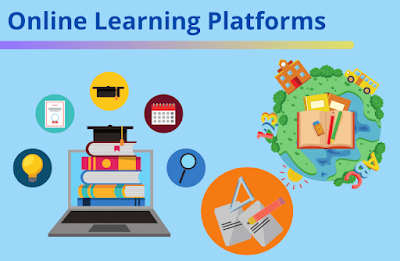Introduction
The COVID-19 pandemic has accelerated the adoption of remote learning, and schools are now faced with the challenge of finding the right platforms to support their online teaching endeavors. With numerous options available, selecting the best online remote learning platform can be a daunting task. This guide will help you understand the key features to look for and provide an overview of some of the best remote learning platforms available. These features include user-friendly interfaces, robust security measures, and compatibility with various devices to ensure all students can access the materials. Additionally, the guide will discuss platforms that offer interactive elements such as virtual whiteboards, breakout rooms, and discussion forums to foster engagement and collaboration among students. By carefully considering these aspects, schools can make informed decisions that will enhance the remote learning experience and contribute to the academic success of their students.
The Importance of Remote Learning Platforms
Remote Learning Platforms for Schools have become essential tools for schools, offering a flexible and effective way to teach students. These platforms facilitate the transition from traditional classrooms to virtual learning environments, ensuring that education continues uninterrupted. They also provide a range of features that enhance the learning experience for students and make the management of educational content easier for teachers. With interactive tools, real-time feedback, and comprehensive analytics, these platforms support personalized learning and enable teachers to track student progress effectively. Additionally, they often integrate with other educational technologies, creating a seamless and efficient ecosystem for digital education.
Key Features of Remote Learning Platforms
When selecting a remote learning platform, schools should consider the following key features:
- User Interface and User Experience: The platform should be easy to navigate and use for both teachers and students.
- Customization and Personalization: The ability to customize the platform to meet the specific needs of the school and personalize learning experiences for students.
- Content Creation and Management: Tools for creating, uploading, and organizing educational content.
- Collaboration and Communication Tools: Features that support interaction between students and teachers, such as discussion forums, chat, and video conferencing.
- Assessment and Evaluation Tools: Tools to create quizzes, assignments, and other assessment types, along with grading and feedback features.
- Integration with Existing Systems: Compatibility with other tools and systems already in use by the school.
- Security and Data Privacy: Measures to protect the personal information of students and staff.
Best Remote Learning Platforms for Schools
1. Moodle LMS
Moodle LMS is an open-source platform known for its versatility and comprehensive feature set. It offers:
- Customizable dashboard
- Support for multiple content formats
- Collaboration tools
- Assessment and evaluation tools
- Integration with third-party plugins
2. Adobe Captivate
Adobe Captivate is a professional platform for creating learning content, offering:
- Support for VR projects
- Templates for streamlined project production
- Acquisition options
- Integration with Adobe Creative Cloud
3. Acorn LMS
Acorn LMS provides transparent pricing and a range of features, including:
- Tiered pricing structure
- Customizable content
- Collaboration tools
- Assessment and evaluation tools
4. Canvas LMS
Canvas LMS integrates seamlessly with popular apps, including:
- Adobe
- Google Workspace
- Microsoft Teams
5. Google Classroom
Google Classroom offers a cloud-based learning environment that integrates with Google tools, providing:
- Google Meet for video conferencing
- Google Drive for file storage
- Google Docs for document collaboration
6. Thinkific
Thinkific is an online platform that allows educators to:
- Build a website for their courses
- Issue certificates of completion
- Accept payments from learners worldwide
7. 360Learning
360Learning simplifies project creation with its integrated tools, including:
- Video editing software
- Templates branded as ‘Cheat Sheets’
8. Blackboard Learn
Blackboard Learn offers a robust set of integrated tools, such as:
- Plagiarism checker
- Accessibility tools
- Communication tools
9. Absorb LMS
Absorb LMS is designed for corporate learning but is adaptable for schools. It features:
- Integration with corporate social media accounts
- Options for learners to create social profiles on the platform
10. Docebo
Docebo uses artificial intelligence to enhance learning experiences by:
- Creating personalized content
- Delivering targeted learning materials
- Measuring the impact of learning activities
Conclusion
In conclusion, remote learning platforms have become an essential tool for schools, offering a flexible and effective way to teach students. By selecting the right platform, schools can ensure a smooth and engaging online learning experience. Each platform listed here has its unique strengths, so consider the specific needs of your school when making a choice. With the right platform, you can create an effective and enjoyable learning environment for both students and teachers.






0 Comments